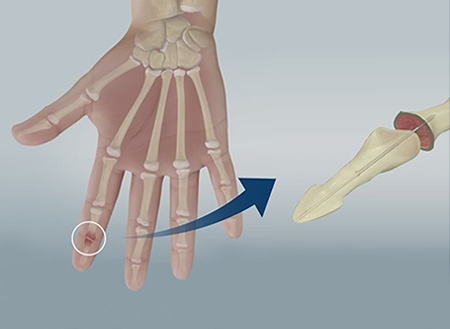Throughout the course of these blogs, we have discussed varying joint replacement (or arthroplasty) procedures at length. However, replacement is not the only option when the joint is arthritic or otherwise deteriorated. Joints can also be fused together to minimize the pain associated with degenerative joint disease. Joint fusions have a time and a place and work better for some joints than others. Your surgeon will help you decide which procedure is appropriate for you, your lifestyle, and what you would still like the joint to be able to do.
When it comes to restoring the most natural movement of a joint, a replacement provides the best opportunity to do so. The goal of a joint replacement is to eliminate the deteriorated ends of the involved bone by replacing them with artificial parts that mimic the native anatomy to restore pain-free function. A fusion (or arthrodesis), on the other hand, takes a different approach to minimizing pain associated with an arthritic joint. Fusing the joint involves fixating the involved bones to minimize movement of the joint. For many patients, pain caused by an arthritic joint is exacerbated by movement. Once a joint is fused, the aggravating factor is removed from the equation. Thus, patients are left with less pain.
With that being said, some joints lend themselves to fusion more than others. You have probably never talked to a friend with a knee fusion, but may know someone who had his or her thumb joint fused surgically. Larger joints that provide greater motion vital to normal daily function of the body are not fused. However, smaller joints that provide a lesser motion, or a motion for which another joint can compensate, are more reasonable to fuse. Oftentimes, patients do not miss the motion loss in a small finger joint. Other joints that are eligible for fusion are those of the spine. The total motion of the spine is made up of each individual joint contributing a much smaller degree of motion. When these individual joints deteriorate with time, the individual vertebrae are not replaced with artificial pieces. Instead, a certain length of the spine is fused to prevent painful motion.
Sometimes, a joint fusion is the only available surgical option. Some joints, such as the ankle, require a certain amount of anatomic alignment to be maintained in order for a joint replacement to be successful. If the deterioration has progressed beyond that point, the only viable surgical option is an ankle fusion rather than a replacement. Other times the integrity of the bones is compromised and will not be sufficient for placing an implant. This could be caused by diabetes, smoking, avascular necrosis or osteoporosis. If the bone isn’t healthy enough to withstand the implant, a fusion may be the preferred option.
Both joint arthroplasty and joint arthrodesis are viable surgical options for people struggling with the pain of arthritis. Your surgeon will guide you through the options and the degree of functionality you can expect from each respective procedure. Together, you can determine which will be most effective in restoring your quality of life.
This blog is written by one of our very own-Morgan. She is a certified athletic trainer working in our clinic with our providers each and every day. She obtained a bachelor's degree in athletic training from Carroll University in Waukesha and a master's degree in Kinesiology from Michigan State University.

